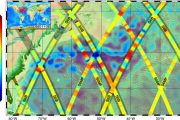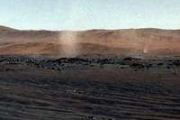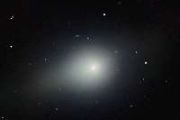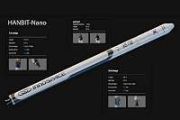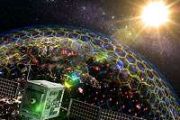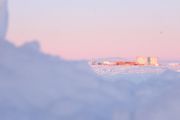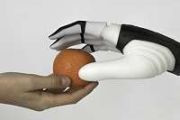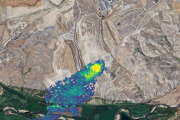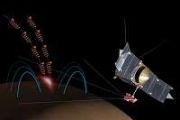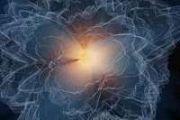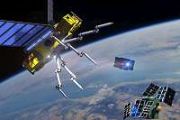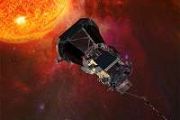
Copernical Team
Undeterred by Friday the 13th, SpaceX plans pair of launches
 SpaceX plans to launch 23 Starlink communications satellites into low-Earth orbit from Vandenberg Space Force Base in California Friday morning, weather permitting.
The planned 11:28 a.m. PT liftoff will be the first of a pair of SpaceX launches scheduled for Friday the 13th. The other will carry a GPS navigation satellite into orbit from Cape Canaveral Space Force Station in Florida so
SpaceX plans to launch 23 Starlink communications satellites into low-Earth orbit from Vandenberg Space Force Base in California Friday morning, weather permitting.
The planned 11:28 a.m. PT liftoff will be the first of a pair of SpaceX launches scheduled for Friday the 13th. The other will carry a GPS navigation satellite into orbit from Cape Canaveral Space Force Station in Florida so ESA to collaborate with ISRO on Gaganyaan missions
 On December 4, 2024, the European Space Agency (ESA) and the Indian Space Research Organisation (ISRO) formalized an agreement that establishes ESA's support for India's Gaganyaan human spaceflight program. This collaboration will leverage ESA's ground station capabilities to aid ISRO's ambitious mission to send humans into space.
Gaganyaan is India's inaugural human spaceflight initiative
On December 4, 2024, the European Space Agency (ESA) and the Indian Space Research Organisation (ISRO) formalized an agreement that establishes ESA's support for India's Gaganyaan human spaceflight program. This collaboration will leverage ESA's ground station capabilities to aid ISRO's ambitious mission to send humans into space.
Gaganyaan is India's inaugural human spaceflight initiative NASA's crew capsule had heat shield issues during Artemis I - an aerospace expert on these critical spacecraft components
 Off the coast of Baja California in December 2022, sun sparkled over the rippling sea as waves sloshed around the USS Portland dock ship. Navy officials on the deck scrutinized the sky in search of a sign. The glow appeared suddenly.
A tiny spot at first, it gradually grew to a round circle falling at a great speed from the fringes of space. It was NASA's Orion capsule, which would soon en
Off the coast of Baja California in December 2022, sun sparkled over the rippling sea as waves sloshed around the USS Portland dock ship. Navy officials on the deck scrutinized the sky in search of a sign. The glow appeared suddenly.
A tiny spot at first, it gradually grew to a round circle falling at a great speed from the fringes of space. It was NASA's Orion capsule, which would soon en A CubeSat mission to Phobos could map staging bases for a Mars landing
This request seems a bit unusual, so we need to confirm that you're human. Please press and hold the button until it turns completely green. Thank you for your cooperation!
Press and hold the button
If you believe this is an error, please contact our support team.
185.132.36.159 : 644c338a-bbb4-4ff9-8131-18608976
NASA is seeking ideas for rescuing an astronaut from the moon
This request seems a bit unusual, so we need to confirm that you're human. Please press and hold the button until it turns completely green. Thank you for your cooperation!
Press and hold the button
If you believe this is an error, please contact our support team.
185.132.36.159 : 3b3dda30-bb3c-4e55-b886-9c706b1c
Trump may cancel NASA's powerful SLS Moon rocket—what that would mean for Elon Musk and the future of space travel
This request seems a bit unusual, so we need to confirm that you're human. Please press and hold the button until it turns completely green. Thank you for your cooperation!
Press and hold the button
If you believe this is an error, please contact our support team.
185.132.36.159 : 404ec14a-4d17-4db2-9636-081ece5b
A new reconfigurable structure could be used to make space habitats
This request seems a bit unusual, so we need to confirm that you're human. Please press and hold the button until it turns completely green. Thank you for your cooperation!
Press and hold the button
If you believe this is an error, please contact our support team.
185.132.36.159 : 8133a3d5-0cca-424d-ad2f-df5407e7
NASA successfully integrates Roman mission's telescope, instruments
This request seems a bit unusual, so we need to confirm that you're human. Please press and hold the button until it turns completely green. Thank you for your cooperation!
Press and hold the button
If you believe this is an error, please contact our support team.
185.132.36.159 : 52ea4a06-4a21-480a-a96e-e20f377b
Human settlement of Mars isn't as far off as you might think
This request seems a bit unusual, so we need to confirm that you're human. Please press and hold the button until it turns completely green. Thank you for your cooperation!
Press and hold the button
If you believe this is an error, please contact our support team.
185.132.36.159 : 37e6319b-0668-4476-b635-745d6c7a
Virgin Galactic eyes possible expansion into Italy
This request seems a bit unusual, so we need to confirm that you're human. Please press and hold the button until it turns completely green. Thank you for your cooperation!
Press and hold the button
If you believe this is an error, please contact our support team.
185.132.36.159 : 2e505d80-d494-4af2-8edd-2fa9283c



